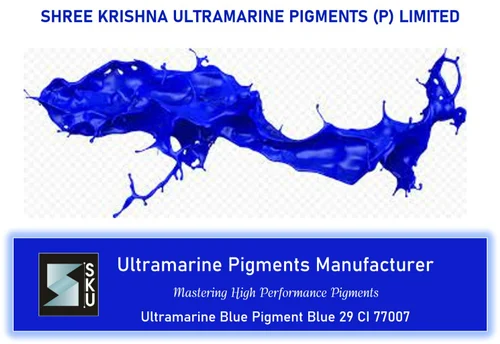
Contents
The Intriguing Science Behind Ultramarine Blue
Introduction
Unravel the secrets of the mesmerizing hue of Ultramarine Blue as we delve into the remarkable chemistry behind its creation. But first, let’s set the scene. Imagine azure skies, sapphire oceans, and the vibrant blossoms of the Himalayan blue poppy. What do they all have in common? Yes, the alluring blue hue. One of the most captivating shades of blue found in art and nature is the Ultramarine Blue. This blog post will take you on an enlightening journey through the captivating process of creating this pigment, revealing the Ultramarine Blue formula that has enchanted artists for centuries.

What is Ultramarine Blue?
Ultramarine Blue, with its rich, intense color, has been a beloved choice of artists and color enthusiasts since antiquity. This pigment, originally derived from the precious stone lapis lazuli, has a vibrant, deep blue color that can range from bright and dazzling to almost violet in tone.
The Ultramarine Blue Formula
Historically, Ultramarine was derived from the mineral lapis lazuli, a complex aggregate of several minerals, including lazurite, which gives the stone its characteristic blue color. But the modern method of manufacturing Ultramarine Blue is a fascinating interplay of chemistry and heat.
The Ultramarine Blue formula involves a mixture of three simple ingredients: kaolin (a type of clay), sulfur, and sodium carbonate. When these components are heated together at high temperatures, a chemical reaction occurs, and the result is the mesmerizing Ultramarine Blue pigment.
Here’s a simplified representation of the chemical reaction:
Kaolin + Sulfur + Sodium Carbonate → Heat → Ultramarine Blue
The exact process is a well-guarded secret among pigment manufacturers. Still, it’s known that the heating process is meticulously controlled to ensure the perfect shade and intensity of the resulting Ultramarine Blue.
Ultramarine Blue in Art and Culture
The significance of Ultramarine Blue extends beyond its chemical composition. This pigment has been a favorite of artists for centuries, from the vibrant frescoes of the Renaissance to the starry skies painted by Van Gogh. Its enduring popularity is a testament to the allure and versatility of this unique color.
Conclusion
The allure of Ultramarine Blue lies not only in its captivating hue but also in the fascinating chemical process behind its creation. The Ultramarine Blue formula, a blend of kaolin, sulfur, and sodium carbonate, heated to just the right temperature, creates a pigment that has captured the imagination of artists and color lovers for centuries.
Whether you’re an artist, a student of chemistry, or simply someone who appreciates the beauty of color, understanding the Ultramarine Blue formula offers a deeper appreciation for this remarkable pigment. This vibrant blue isn’t just a color; it’s a testament to the remarkable interplay of art, nature, and science.
Keywords: Ultramarine Blue, Ultramarine Blue formula, pigment, color, art, chemistry, kaolin, sulfur, sodium carbonate, heating process, lapis lazuli, blue color.


One thought on “The Intriguing Science Behind Ultramarine Blue: Ultramarine Blue formula”